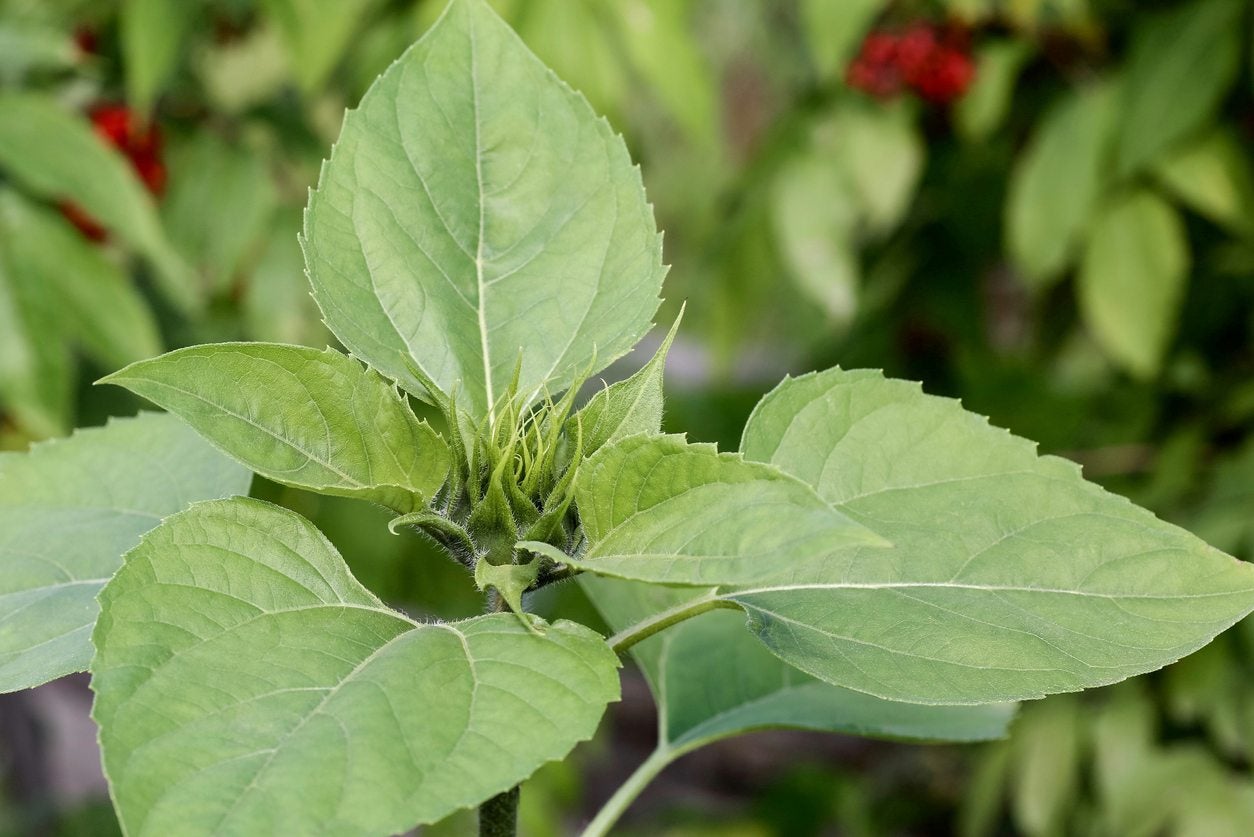Why Is My Sunflower Not Blooming: Reasons For No Blooms On Sunflower


You planted carefully, watered well. Shoots came up and leaves. But you never got any flowers. Now you are asking: Why is my sunflower not blooming? You’ll be surprised by the variety of reasons you may have no blooms on sunflower plants. Read on for the inside scoop on sunflower blooming problems.
Why is My Sunflower Not Blooming?
Sunflowers are the cheeriest of blossoms. Their happy yellow faces turn to follow the sun’s progress across the sky. Many contain edible seeds beloved by humans and birds alike. So it’s distinctly disappointing when you have sunflower plants with no flowers, but understanding your sunflower blooming problems is the first step to solving them.
Look at growing conditions
Why, you may ask, are my sunflower plants not blooming? When you find your sunflower plants with no flowers, first take a close look at where, when and how you planted them. Improper growing conditions and culture definitely can result in no blooms on sunflowers. Let there be light! Yes, sunlight is on the top of a sunflower’s “must-have” list. Sunflower plants with no flowers can result if you site the plants in the shade. These fast-growing annuals need at least 6 hours of direct sun daily. Too little sunlight can retard flower formation, which means no blooms on sunflower plants. In terms of cultural care, sunflowers are not terribly demanding. They do need well-draining soil, however, and moist, fertile soil also helps. Nutrient-poor, sandy soil isn’t likely to produce generous blossoms.
Examine for insects
When you see sunflower plants not blooming, you might also think of insect pests like the sunflower midge. The sunflower midge was first noticed on wild sunflowers throughout the northern Great Plains and south to Texas. But the pest has spread to areas where sunflowers are cultivated. The adult sunflower midge is a delicate fly. It overwinters in soil as a larva to emerge in late July and lay its eggs on clusters of developing sunflower buds. You’ll find them either underneath the bud bracts or in the bud center. Two days after the eggs are laid, larvae hatch out. They develop inside the sunflower buds, feeding on them. The buds appear to swell from all the larvae activity. However, the flower head may be damaged to such an extent that you find no blooms on sunflower plants infected. Your best bets for limiting sunflower blooming problems from these midge is to spread out the budding dates of your plants over a wide range. The damage varies depending on budding dates. Also, select cultivars that tolerate midge damage.
Sign up for the Gardening Know How newsletter today and receive a free copy of our e-book "How to Grow Delicious Tomatoes".

Teo Spengler is a master gardener and a docent at the San Francisco Botanical Garden, where she hosts public tours. She has studied horticulture and written about nature, trees, plants, and gardening for more than two decades, following a career as an attorney and legal writer. Her extended family includes some 30 houseplants and hundreds of outdoor plants, including 250 trees, which are her main passion. Spengler currently splits her life between San Francisco and the French Basque Country, though she was raised in Alaska, giving her experience of gardening in a range of climates.